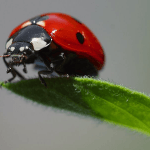 Win / Win Outcomes For Gardener And Environment
Win / Win Outcomes For Gardener And Environment
1.00 – 4.00 pm, Saturday 18th April
CERES Environmental Park
Integrated Pest Management
Angelica Cameron – Entomologist, IPM Technologies
Good Bugs and Bad Bugs
Denis Crawford – Author of Garden Pests, Diseases & Good Bugs: The Ultimate Illustrated Guide for Australian Gardeners. A regular contributor to Gardening Australia magazine and Hort Journal Australia and writer of the blog oneminutebugs.com.au
Companion Planting
Angelo Eliades – SGA staff, trainer and writer in the areas of sustainable gardening and permaculture. DeepGreenPermaculture.com
Summary
Nature has developed subtle but effective pest management strategies. A gardener can use these methods by observing and encouraging nature to create a balance of pests and predator. Whilst the use of chemicals may sometimes be required, they should be a last line of attack as most (even organic / home brew recipes) are broad-spectrum and don’t differentiate between killing pests or beneficial insects. They often destroy any chance of developing a balanced system of insects in the garden.
A diversity of herbs and flowers as companion plants can create habitat and food supplies for beneficial insects, repel pests, suppress diseases, provide decoys and mask the shapes and scents of our prized plants, thereby protecting them. Providing habitat and food sources for insects allows a more balanced and diverse insect population to thrive. This includes predatory insects that can manage small outbreaks of garden pests before they get out of control.
Some Key Messages
- Use companion plants Encourage beneficial insects by providing habitat and food
- Before using any chemicals for pest management, ask whether they are really needed and is the damage only cosmetic
- Consider the unintended impacts of using chemicals on beneficial insects.


